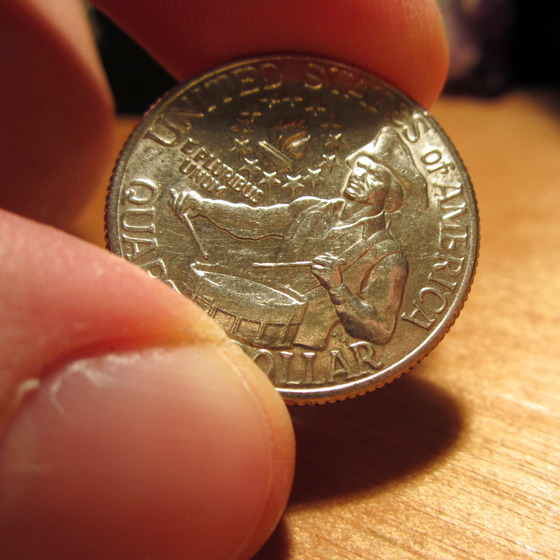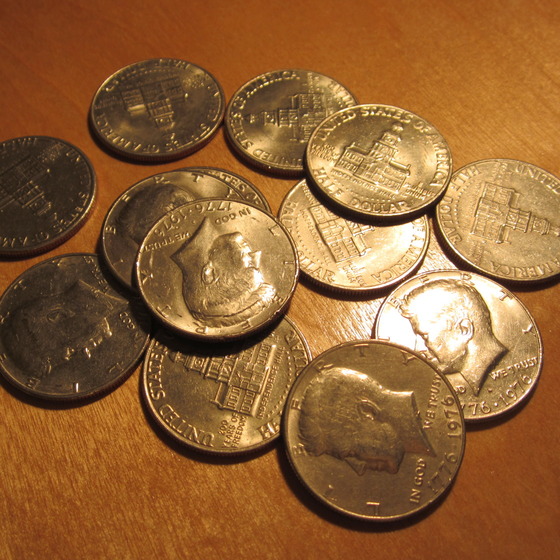When I was a kid, I collected coins. One of my special interests was bicentennials, probably because they were in general circulation and not very difficult to find. Back in those days, the U.S. Mint didn’t redesign the coins every few months like they do now, so it was fun to find a quarter that was different than the normal “eagle” variety.
I played a lot of poker as a teenager, and our games were always nickel-dime-quarter stakes. With all of the coins flying around, I’d offer to buy any bicentennial quarters from my friends… and I’d pay a premium, so they could sell me a quarter for thirty cents. I was able to amass quite a few of them over the years.
The other day, Laralee bought a roll of quarters and a roll of half-dollars. (It’s kind of a long story.) Looking through them, I was excited to find a bicentennial quarter.
You generally don’t see many of them these days, possibly due to the fact that I’m not the only one who collects them, but also because they were minted in 1976, which was thirty-seven years ago. There aren’t nearly as many old quarters in circulation. So I bought this one for thirty cents from Laralee.
Then I looked through her half-dollars– there were fifty of them. I found a staggering thirteen bicentennial half-dollars!
I bought these from Laralee as well (she only charged me their face value of $6.50) to add to my collection. But it got me thinking. Statistically speaking, it seems highly unlikely that in a roll of fifty coins you’d find thirteen from the same year. I wondered what the odds would be.
Kennedy half-dollars, in their current copper-nickel composition, were minted for general circulation from 1965 to 2001. Prior to 1965, they had a high silver content, so it’s exceedingly rare to find any of them in circulation today. After 2001, only proof sets and collector’s sets have been minted. That means in all likelihood, one will find half-dollars spanning about 36 years. Using simple math (not accounting for actual production counts by year, nor taking into account the possibility that people hoard the 1976 coins for the same reason I do), one could conclude that in a pile of 36 random half-dollars, it’s almost certain that one of them would be a bicentennial. Thus, a single roll of 50 would be expected to have one. But thirteen?
I was going to sit down and do the math to figure out the actual probability of that happening, but quite honestly despite majoring in applied mathematics, I always kind of sucked at probability theory. A little internet poking might turn up a solution, but frankly I’m too tired for it now. I’ll just enjoy my good fortune, and probably end up digging out my old coin collection to bring back some good memories.


